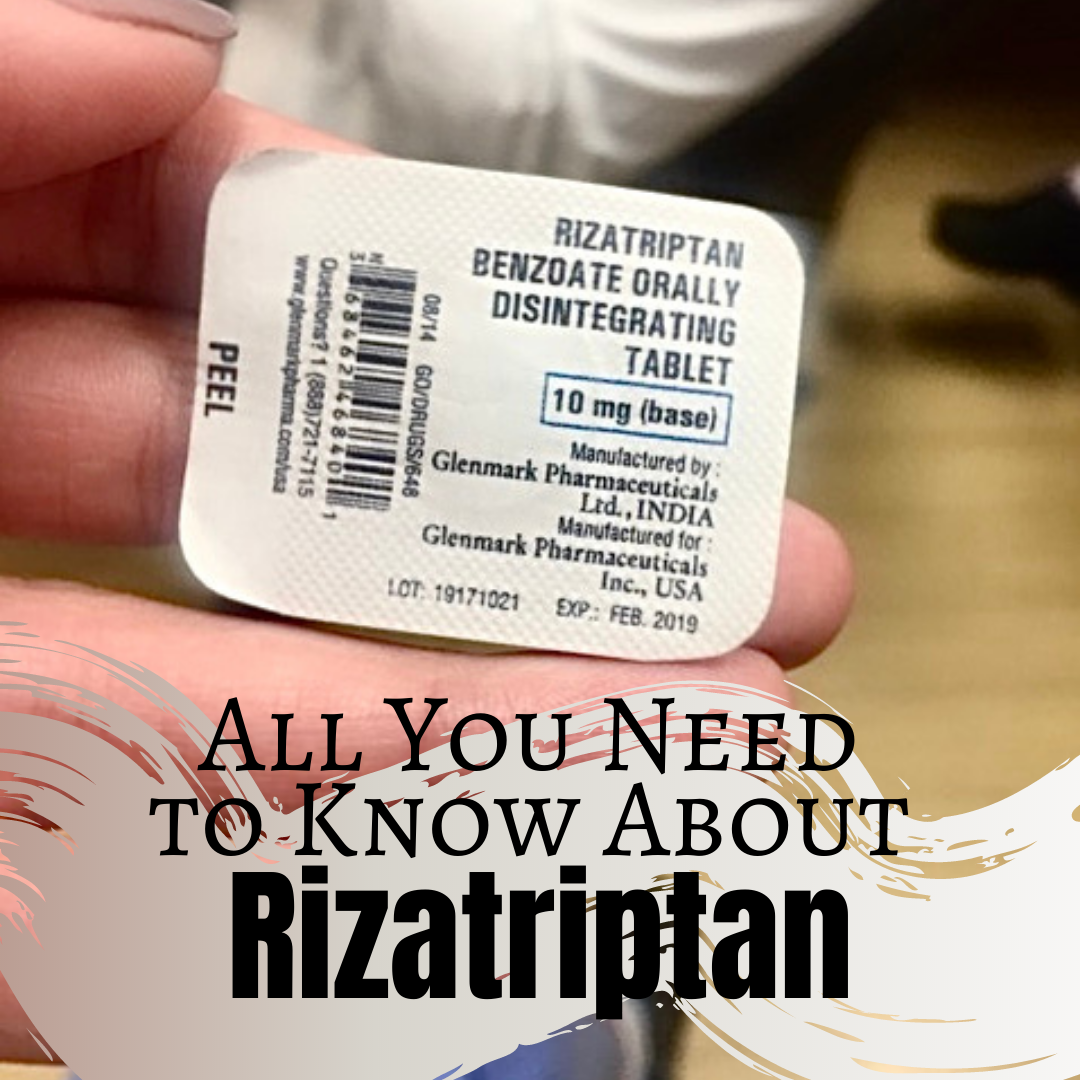All You Need to Know About Rizatriptan

Hi friends and happy Medication Monday! Woot, woot. Today we are talking Rizatriptan! Who knows what this medication is used for?
If you guessed migraines- you are correct! In today’s blog post I will be teaching you all you need to know about Rizatriptan, including it’s side effects and contraindications. Keep reading to learn more…
Rizatriptan, an anti-migraine medication, is prescribed to patients when they have a history of persistent migraines with or without an aura. An aura is a feeling or sensation you experience prior to a migraine or any other neurological event (i.e., seizure). This sensation generally includes symptoms such as visual disturbances (flashing lights, zig zag lines), or taste of metal. A migraine aura typically occurs about an hour before a migraine.
Dosage and forms:
As of 2020, Rizatriptan comes in two different forms and strengths.
- Tablet – 5mg, 10mg
- ODT (oral disintegrating tablet) – 5mg, 10mg
Adverse effects of Rizatriptan:
Adverse effects of Rizatriptan include:
- Drowsiness
- Fatigue
- Dizziness
- Somnolence
- Hot flashes
- Pain/pressure in chest, neck, throat or jaw (if this adverse effect does occur, you must consult with a provider immediately).
Contraindications of Rizatriptan:
There are a few contraindications that you must be aware of as a Nurse when caring for a patient who takes Rizatriptan. You also want to ensure you consider your patient’s presenting illness (why they are in the hospital) and their medication reconciliation (med rec). What I mean by this is if a patient was recently admitted for a stroke and the med rec states that the patient takes Rizatriptan at home, as a nurse you should advise the provider so that education to avoid this medication in the future can take place.
- Hypersensitivity
- Ischemic heart disease or other CV conditions such as uncontrolled hypertension
- Hx of stroke or transient ischemic attack (TIA)
- Peripheral vascular disease
- Use of MAOI’s within the last two weeks
- Do not give to children <6 years of age
Make sure to use cautiously in the following patients
- Renal disorders
- Avoid in patients with obesity, hypercholesterolemia, diabetes, menopause, strong family history of coronary artery disease or any condition or person that is at risk for coronary artery disease.
- Do not combine with other SSRI’s, SNRIs, TCAs or MAOIs.
- Decreased dose for patients who are also taking Propranolol.
Well, there you have it! All you need to know about Rizatriptan. Although Rizatriptan has helped many in the treatment of migraines it also has quite a few adverse effects and contraindications. Ensuring your patient is aware of these is essential in preventing any complications. Hope you guys enjoyed today’s Medication Monday!
I have also been providing 5 daily NCLEX questions over on the gram, so if you are interested in testing your knowledge- head on over there to answer the questions and read rationales! Promise, you won’t regret it. You can click on the instagram pin on the homepage or search me – www.instagram.com/therneducator.
What other triptans can you name that fall under the anti-migraine class? Comment below, let’s discuss!
’till next time,
The RN Educator


Share this:
Related Posts
What’s in a Pediatric Crash Cart? Nursing Students read NOW!
A pediatric crash cart is a mobile unit containing essential equipment and medications required for…
Share this:
How to Become a Confident Nurse
If you are anything like me, and let’s face it (like every nurse…



